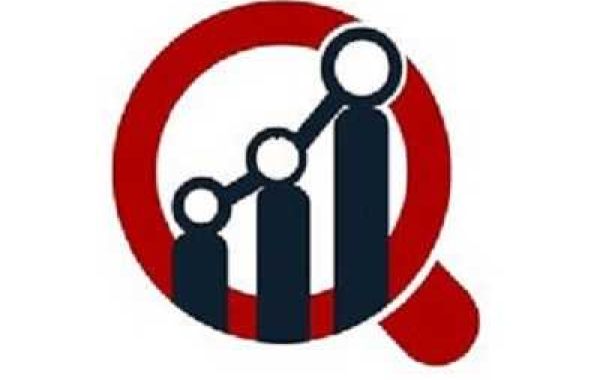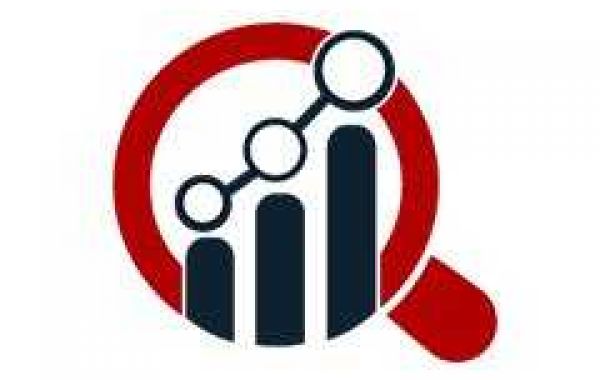I. Understanding Patient Expectations
Patients play a crucial role in the medical billing process, and understanding their expectations is key to providing a seamless experience.
A. Importance of Clear Communication
Clear communication is vital in medical billing to ensure patients understand the charges, insurance coverage, and payment responsibilities. From the moment a patient schedules an appointment to the final billing statement, transparent communication helps alleviate confusion and build trust.
B. Transparent Pricing Policies
Transparent pricing policies empower patients to make informed decisions about their healthcare. Providing upfront estimates for services, explaining insurance coverage, and disclosing potential out-of-pocket costs help patients feel confident and prepared when it comes to medical expenses.
C. Providing Timely Updates
Patients appreciate timely updates throughout the billing process. Whether it's notifying them of insurance claim status, payment processing, or outstanding balances, keeping patients informed demonstrates transparency and professionalism. Prompt responses to patient inquiries also foster trust and satisfaction.
Incorporating these strategies into medical billing practices can greatly enhance patient satisfaction and contribute to a positive overall healthcare experience.
II. Streamlining the Billing Process
A. Simplifying Payment Options
Navigating medical bills can be overwhelming for patients, especially during stressful times. Offering simplified payment options, such as online portals, automatic payments, and flexible payment plans, can ease the burden and provide patients with greater convenience and flexibility in managing their healthcare expenses.
B. Implementing Electronic Billing Systems
Traditional paper-based billing systems can be time-consuming and prone to errors. Implementing electronic billing systems streamlines the process, reducing administrative overhead and expediting payment processing. Electronic billing also allows for quicker submission of claims to insurance companies, resulting in faster reimbursement and improved cash flow for healthcare providers.
C. Offering Financial Assistance Programs
Financial hardships should not prevent patients from accessing necessary medical care. Offering financial assistance programs, such as sliding scale fees, discounts for uninsured patients, and charity care programs, demonstrates compassion and commitment to serving the community. These programs help alleviate financial barriers to care and ensure that all patients receive the treatment they need, regardless of their financial circumstances.
FAQ: Do I qualify for financial assistance with my medical bills?
1. Eligibility Criteria:
Financial assistance programs vary by healthcare provider, but they typically consider factors such as income level, family size, and medical expenses. Patients experiencing financial hardship due to unemployment, unexpected medical expenses, or other extenuating circumstances may be eligible for assistance.
2. Application Process:
To apply for financial assistance, patients typically need to complete an application form and provide documentation to verify their financial situation. This may include proof of income, tax returns, bank statements, and information about medical expenses. The application process is confidential, and healthcare providers are committed to protecting patients' privacy.
3. Assistance Options:
Financial assistance programs may offer various forms of support, including discounts on medical services, payment plans, or assistance with insurance premiums and deductibles. Patients are encouraged to discuss their financial situation with their healthcare provider to explore available options and determine the best course of action for managing their medical bills.
III. Enhancing Customer Service
A. Training Staff on Compassionate Communication
Effective communication is essential in the healthcare industry, especially when it comes to billing. Training staff on compassionate communication ensures that patients feel heard, understood, and supported throughout the billing process. Empathy, patience, and active listening skills help build trust and alleviate anxiety or frustration patients may experience when discussing their medical bills.
B. Personalizing the Patient Experience
Every patient is unique, and tailoring the billing experience to individual needs and preferences can make a significant difference in customer satisfaction. Personalizing communication, addressing patients by name, and acknowledging their specific concerns or circumstances demonstrate care and attention to detail. Building rapport and fostering a positive relationship with patients contributes to a more positive overall experience.
C. Resolving Billing Inquiries Promptly
Promptly addressing billing inquiries and concerns shows patients that their needs are a priority and reinforces trust in the healthcare provider. Whether it's clarifying charges, explaining insurance coverage, or resolving billing errors, timely responses demonstrate professionalism and commitment to customer service. Clear communication and follow-up ensure that patients feel supported and valued throughout the resolution process.
FAQ: How can I get help with a billing inquiry?
1. Contacting Customer Service:
If you have a billing inquiry or concern, the first step is to contact the healthcare provider's customer service department. You can usually find contact information on your billing statement or the provider's website. Be prepared to provide details about your inquiry, such as specific charges or account numbers, to expedite the resolution process.
2. Explaining Your Concern:
When speaking with a customer service representative, clearly explain your billing inquiry or concern. Provide any relevant documentation or information to support your case, such as insurance documents or billing statements. Be polite and patient, and ask for clarification if anything is unclear during the conversation.
3. Following Up:
If your billing inquiry is not resolved during your initial contact with customer service, don't hesitate to follow up. Request a timeline for resolution and ask for a reference number or case ID to track the progress of your inquiry. Persistence and clear communication can help ensure that your billing issue is addressed promptly and satisfactorily.
IV. Building Trust and Credibility
A. Safeguarding Patient Data
Protecting patient privacy and confidentiality is paramount in medical billing. Implementing robust security measures, such as encryption protocols and access controls, helps safeguard patient data from unauthorized access or breaches. By prioritizing data security, healthcare providers demonstrate their commitment to protecting patient privacy and earning trust.
B. Establishing a Fair Dispute Resolution Process
Billing disputes can arise due to misunderstandings, errors, or discrepancies in charges. Establishing a fair and transparent dispute resolution process ensures that patients have a mechanism to address billing concerns promptly and fairly. Providing clear instructions for submitting disputes, investigating inquiries thoroughly, and communicating resolution outcomes promptly fosters trust and credibility with patients.
C. Seeking Patient Feedback for Continuous Improvement
Patient feedback is invaluable for identifying areas of improvement and enhancing the billing experience. Encouraging patients to share their feedback through surveys, suggestion boxes, or online platforms demonstrates a commitment to listening and responding to patient needs. Actively incorporating patient feedback into process improvements and policy changes shows a dedication to continuous learning and enhancement of services.
FAQ: How can I report a billing error or dispute?
1. Contacting Customer Service:
If you believe there is an error or discrepancy in your medical bill, contact the healthcare provider's customer service department as soon as possible. You can usually find contact information on your billing statement or the provider's website. Be prepared to provide details about the charges in question and any supporting documentation you may have.
2. Submitting a Dispute:
When speaking with a customer service representative, explain the nature of your dispute clearly and concisely. Provide specific information about the charges you are disputing and any relevant documentation to support your case. Customer service representatives are trained to handle billing inquiries and can assist you in resolving the dispute.
3. Following Up:
If your billing dispute is not resolved to your satisfaction during your initial contact with customer service, don't hesitate to follow up. Request a timeline for resolution and ask for a reference number or case ID to track the progress of your dispute. Healthcare providers are committed to resolving billing disputes promptly and fairly to ensure patient satisfaction and maintain trust and credibility.
V. Leveraging Technology for Efficiency
A. Utilizing Automated Reminders for Payments
Automated reminders for payments leverage technology to streamline the billing process and enhance convenience for patients. By sending automated reminders via email, text message, or phone call, healthcare providers help patients stay informed about upcoming payments and deadlines. This reduces the likelihood of missed payments and late fees, promoting financial responsibility and peace of mind for patients.
B. Online Patient Portals for Billing Information
Online patient portals provide a centralized platform for patients to access their billing information conveniently. Through secure online portals, patients can view and download their medical bills, review payment history, and update personal information. This accessibility empowers patients to take control of their healthcare finances, facilitating transparency and trust between patients and healthcare providers.
C. Integrating Electronic Health Records for Seamless Billing
Integration of electronic health records (EHRs) with billing systems streamlines the billing process and minimizes errors. By consolidating patient health information and billing data into a single electronic platform, healthcare providers can generate accurate bills, verify insurance coverage, and submit claims more efficiently. This integration enhances administrative efficiency, reduces paperwork, and ensures a seamless billing experience for patients.
FAQ: How can I access my medical bills online?
1. Logging into the Patient Portal:
To access your medical bills online, log into the patient portal provided by your healthcare provider. You may need to create an account if you haven't already done so. Patient portals are typically accessible through the provider's website and require a username and password for secure login.
2. Navigating to Billing Information:
Once logged in, navigate to the billing or financial section of the patient portal. Here, you'll find options to view and download your medical bills, review payment history, and update billing preferences. If you encounter any difficulties navigating the portal or accessing your billing information, contact the provider's customer service for assistance.
3. Managing Your Healthcare Finances:
Utilizing the online patient portal allows you to conveniently manage your healthcare finances from the comfort of your own home. Take advantage of this technology to stay informed about your medical bills, track payments, and communicate with your healthcare provider regarding any billing inquiries or concerns.
Summary:
Enhancing patient satisfaction in medical billing is crucial for maintaining a positive patient-provider relationship. By understanding patient expectations, streamlining the billing process, enhancing customer service, building trust, and leveraging technology, healthcare providers can create a seamless billing experience that fosters patient loyalty and satisfaction.
FAQ: How can I provide feedback on my experience with Dallas Medical Billing?
1. Feedback Channels:
Dallas Medical Billing values patient feedback and welcomes your input on your billing experience. You can provide feedback through various channels, including online surveys, email, phone calls, or in-person discussions with staff members.
2. Importance of Feedback:
Your feedback helps Dallas Medical Billing understand areas of strength and areas for improvement in their billing processes and customer service. Your insights contribute to ongoing efforts to enhance the patient experience and ensure satisfaction.
3. Actionable Feedback:
When providing feedback, be specific about your experience and any suggestions you may have for improvement. Whether it's praising exceptional service or highlighting areas where you encountered challenges, your feedback is valuable in shaping Dallas Medical Billing's approach to patient care and billing practices.








